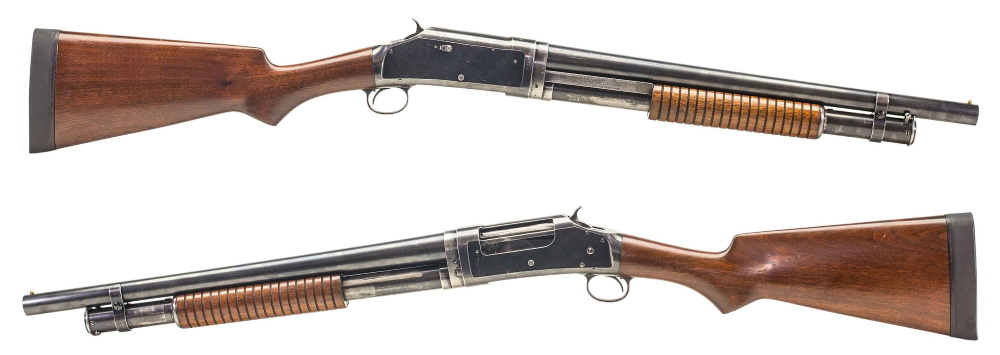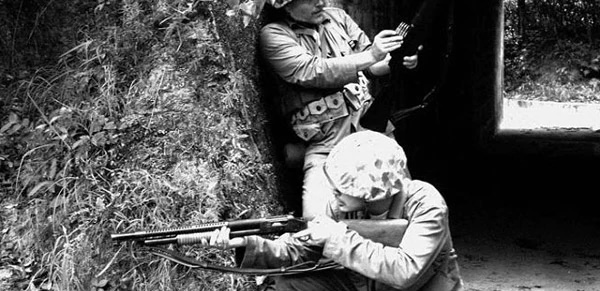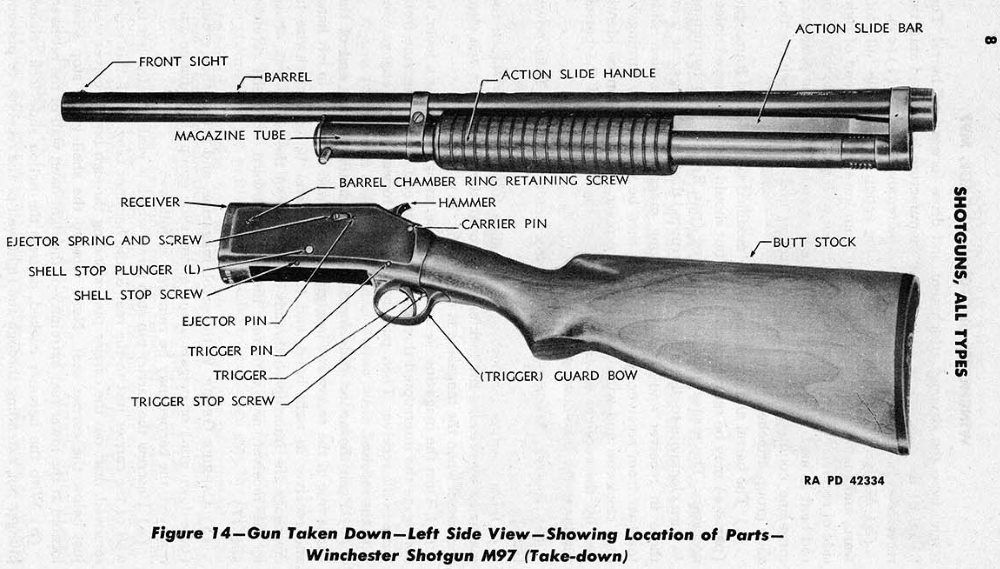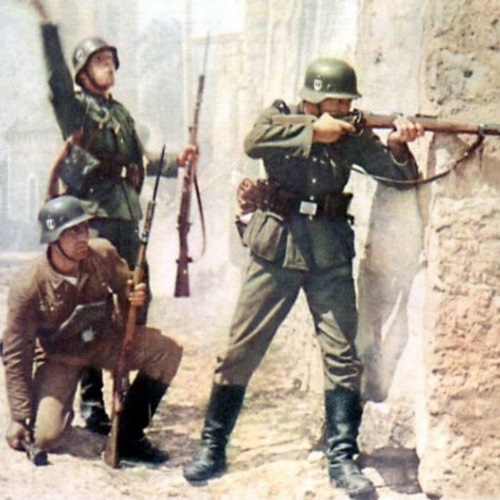Winchester 1897, the Model 97, the M97, or most commonly known as the trench gun was developed and produced by Winchester Repeating Arms Company from 1897 until 1957. It was the first successful pump-action shotgun ever produced and many of its original features live on today in modern shotguns. There were pump-action shotguns that predate the trench gun, but none were as successful. Over one million Winchester 1897 were produced, a sign to their popularity with the military, police, and hunters alike. It’s worth noting that this legendary scattergun was the brainchild of genius inventor John Browning, who is responsible for some of the industry’s most significant innovations.
Pump-action shotguns have become standard issue in police and military units for a variety of uses, not to mention their popularity with civilian shooters for home defense and hunting. The trench gun was the first pump-action shotgun that allowed the user to take off the barrel, which is now common practice in modern pump-action shotguns. It came in both a 12 gauge and 16 gauge model with a wide variety of barrel lengths. The military versions came equipped with a bayonet lug and a heat guard on the top of the barrel so soldiers would not burn themselves after extended use of the weapon. Overall, the Win 1897 is a true piece of Americana that deserves our attention.

Winchester 1897 Military Use
The trench gun received its name while being used by doughboys in the first World War. The first World War was the first time industrialized nations were engaging in war against each other, it was the most brutal and deadly war that the planet had seen up until that point. The war was essentially a stalemate with both sides dug in with trenches taking turns throwing their men into the meat grinder. They were using old tactics with modern weapons while their men were paying the costs. The Winchester 1897 was one of these modern weapons and it deservedly earned its name in the trenches.
It was a very effective weapon if the soldier wielding it managed to navigate across no man’s land into the German trench. One of the reasons it was very effective was because of its rate of fire. I am aware that it is a pump-action shotgun, but when compared to bolt action rifles of the first World War, it fired at a considerable rate. The trench gun had a high rate of fire due to its external hammer being recocked when the weapon was pumped and the weapon lacking a trigger disconnector.

In short, a soldier could hold down the trigger and simply pump the shotgun to get it to fire. It would fire as fast as an individual could pump it. Making it a devastating weapon when a soldier was clearing a trench. Pairing this rate of fire with buckshot and a trench could be very effectively cleared. There are also claims that it was used to shoot grenades out of the air when germans attempted to throw them into American trenches, similar to high explosive skeet shooting.
It was such an effective weapon that the German high command petitioned the legal use of the trench gun in an international court. Claiming it caused “unnecessary suffering” Their diplomatic protest fell on deaf ears, so in response, they threatened to punish any US soldier captured carrying a trench gun. The US responded that reprisal punishments would be carried out against German soldiers captured with flame throwers or serrated edged blade weapons.

However, the history of the Winchester 1897 being used in combat predates the First World War in a lesser-known conflict in the Philippines in 1899. The trench gun gained praise by the marines who were using it for its stopping power. When faced against the ferocious warriors in the southern Philippines, the US military realized their standard-issue sidearm was not effective enough. With many reports that Filipino warriors would still charge and kill US military personnel after being shot by the Colt M1892 .38 caliber pistol. This conflict was the reason the US military decided to develop and switch to the Colt 1911 45 ACP. This conflict had the US military lacking a quality sidearm, but highlighted the effective stopping power of the trench gun in close quarters battle. The Winchester model 1897 was used up until the Vietnam war when it was retired for a more modern shotgun. While the 1897 did see some action in Vietnam, it was phased out in favor of several other shotguns including the Ithaca Model 37 and the Stevens M77E.
Trench Gun for Sale
There are Winchester 1987 shotguns for sale on the civilian market. They are not cheap and are very collectible. Since there were over 1 million produced and many saw a lot of use either in combat or by police forces, there is a wide variety of trench guns for sale in a variety of conditions and prices. If you’re looking for a shotgun to fill a specific use, go with a Mossberg 500 for a fraction of the price. You can find them on the market but even a trench gun in poor condition will still sell for a couple thousand dollars. Since they are still just a simple pump-action shotgun, they are still legal in all 50 states and there is no need for a class 3 license even though they were military-issue at one time.

Conclusion
The Winchester 1987 was a weapon that helped bring shotguns into the modern age. It brought with it the idea of pump-action shotguns being used from a tactical perspective and helped to spawn revolutionary ideas about shotguns that we take for granted today. Its effectiveness in combat cannot be questioned and its use in law enforcement is still echoed today in many departments’ choice to have a shotgun in the squad car. It still lives on with police units, in popular culture, films, and video games.


